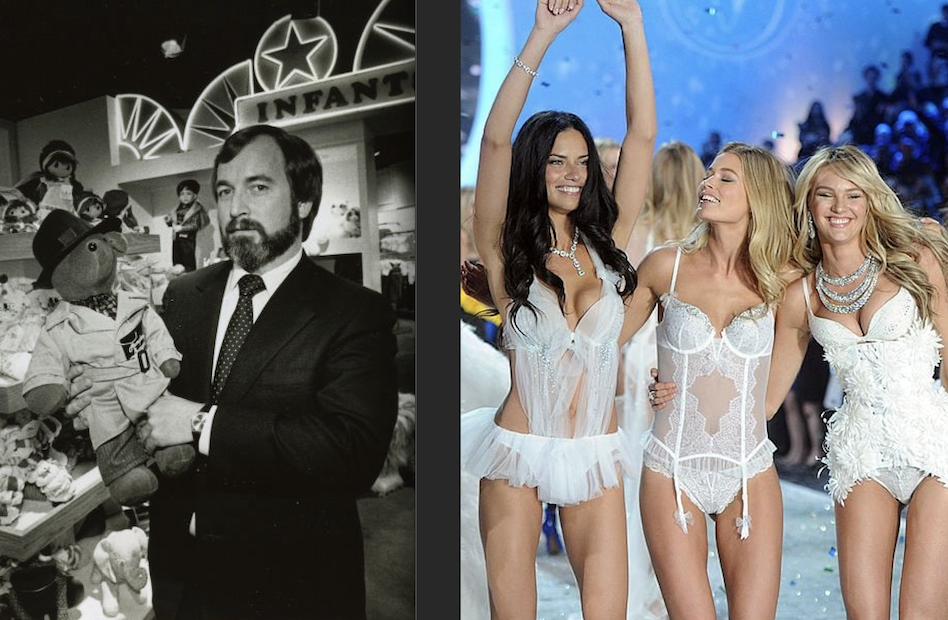Summary of Roy Raymond’s Legacy
The story of Roy Raymond, the founder of Victoria’s Secret, serves as a poignant reminder of how vision can be eclipsed by execution. Despite launching a groundbreaking concept in the world of lingerie, Raymond’s personal journey ended tragically, highlighting the complexities of entrepreneurship and the fine line between success and despair.
The Humiliating Moment That Sparked a Retail Revolution
In the mid-1970s, Roy Raymond, a 30-year-old Stanford MBA, stepped into a department store to buy lingerie for his wife. What he encountered was a disheartening experience, riddled with dull floral print nightgowns under harsh fluorescent lights. To compound his discomfort, saleswomen often made him feel awkward for even being in the lingerie section.
This experience gave rise to a revolutionary idea: a high-end lingerie store where men could shop without shame. He envisioned a Victorian-style boudoir filled with dark wood, oriental rugs, and silk curtains, and branded it Victoria’s Secret, conjuring an air of intrigue and respectability.
From One Store to a Budding Empire
In 1977, Raymond opened the first Victoria’s Secret store in a small Palo Alto mall with an initial investment of $80,000, sourced from a bank loan and his family. This was a pioneering venture in the United States, where such specialized lingerie stores were virtually nonexistent.
At the time, American culture associated lingerie more with practicality than sensuality. Stores like Frederick’s of Hollywood catered primarily to honeymooners. The feminist movements of the late 1960s and 1970s had shifted the focus toward comfort and natural appearances, making Raymond’s concept a daring novelty that aimed to bring the allure of intimacy into the mainstream.
As the brand expanded, Raymond launched a mail-order catalog that ushered the boudoir aesthetic into American homes. By 1982, Victoria’s Secret was generating $6 million in annual revenue. However, beneath the surface, challenges loomed as financial struggles threatened the brand’s future.
Leslie Wexner Saw the Bigger Picture
In the early 1980s, Leslie Wexner had already made a name for himself in American retail, having launched The Limited in 1963. With his keen insight into consumer trends, he recognized that women craved more than mere practicality in their lingerie. Wexner stumbled upon Victoria’s Secret while exploring a Limited store in San Francisco, quickly identifying a significant gap in the market: a store that empowered women rather than catering solely to male shoppers.
In 1982, he acquired Victoria’s Secret for approximately $1 million, a move that would transform the company into a retail powerhouse. By restructuring the brand, Wexner created a space that made women feel glamorous and desirable, while still appealing to male consumers. This rebranding strategy was evident in the introduction of the Miracle Bra, which became a cultural phenomenon in the 1990s.
Roy Raymond’s Downward Spiral
After selling Victoria’s Secret, Raymond briefly remained involved with the company before departing in 1984. Attempting to replicate his earlier success, he launched a new venture, a high-end children’s clothing catalog called My Child’s Destiny, but it failed to attract a customer base. By 1986, he faced bankruptcy, and his personal life unraveled as well.
A Devastating End
On August 26, 1993, Raymond was found deceased, having jumped from the Golden Gate Bridge. The coroner ruled his death a suicide, marking a heartbreaking end to the life of a man who had reimagined an entire retail category.
Despite his tragic demise, Raymond’s legacy endures. His vision for a more sophisticated and less stigmatized lingerie shopping experience laid the groundwork for what would become a $5 billion global brand. In contrast, Wexner flourished financially, reaching a net worth exceeding $7 billion, largely due to the brand Raymond established.
Wexner’s Darker Chapter: The Epstein Connection
In later years, Leslie Wexner’s reputation was marred by his controversial connection to Jeffrey Epstein, who was granted unusual control over Wexner’s finances and properties. While Wexner denied any prior knowledge of Epstein’s crimes, the association led to public scrutiny and a tarnished legacy. In response to growing pressure, Wexner resigned from L Brands in 2020.
Full Circle
Roy Raymond’s story frequently serves as a cautionary tale of unfulfilled potential. However, his impact on American culture and retail extends far beyond his initial concept. He not only established a brand but also transformed societal attitudes toward intimacy and lingerie, laying the foundation for a cultural phenomenon that endures today.

Meet William, a proud Bethel University alumnus with a fervent passion for lifestyle and culture topics. His keen interest doesn’t stop there; he’s also deeply engrossed in current events of all kinds. William dedicates himself wholeheartedly to this site, thriving on the collaborative energy he shares with Suzanne, his long-standing partner in crime.
Having navigated their university courses side by side for years, their teamwork on the site is nothing short of dynamic. Together, they bring a unique blend of insights, proving that two heads are indeed better than one in delivering compelling content.












